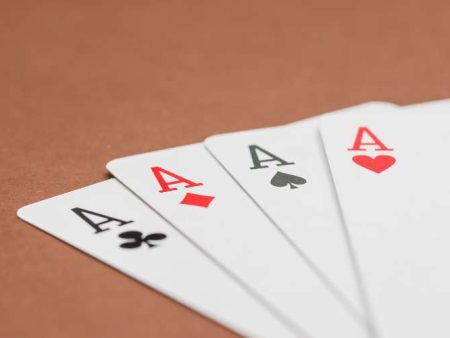
What's on this page
Video poker is one of the most engaging and rewarding casino games around, and I’ve always found it thrilling to test my luck and skill. But playing the game with no strategy or track record can make it difficult to improve. That’s where tracking your progress comes in. By monitoring how you play and what strategies are working, you can boost your success in the long run. In this guide, I’ll show you how to effectively track your video poker progress and how it can improve your game. Let’s dive into this exciting journey together, keeping in mind the importance of responsible gaming!
Understanding Video Poker
Before we delve into tracking your progress, it’s important to understand the game of video poker. Unlike traditional poker, where you play against other players, video poker is typically played against the machine. The objective is simple: get the best possible hand from the five cards you’re dealt. The most common versions are Jacks or Better, Deuces Wild, and Joker Poker, each with slightly different rules. Your goal is to make a winning hand and get paid based on the paytable.
A typical video poker game uses a deck of 52 cards, with the option to hold and discard certain cards before the final payout is calculated. The best hands include pairs, straights, flushes, full houses, and the coveted royal flush. The game is both fun and strategic because you need to decide which cards to hold and which to discard based on your hand.
Why Tracking Your Video Poker Progress is Important
Tracking your video poker progress might sound like an unnecessary chore, but it’s actually a great way to improve. By keeping an eye on your performance over time, you can pinpoint areas where you’re excelling and others where you need improvement. As a beginner, I noticed that when I started tracking, I became more focused and strategic.
Tracking also helps you manage your bankroll effectively. By seeing patterns in your wins and losses, you can make smarter decisions about your bets and how long you play. If you see that you’re on a losing streak, it’s a sign to adjust your approach or even take a break. It’s all about poker psychology—understanding how your mental state impacts your play and knowing when to step back.
Setting Realistic Goals for Your Video Poker Game
When I first started, I didn’t really think about setting goals, but once I did, I saw huge improvements. Setting realistic goals for yourself keeps you focused and motivated. For instance, one of my goals was to increase my win rate from 60% to 70%. It wasn’t an overnight achievement, but by tracking my results and adjusting my strategy, I was able to achieve it over time.
Here are a few example goals that could help you:
- Increase your win rate by a certain percentage over a month.
- Improve your hand selection, making sure to always hold the best cards.
- Adjust your betting patterns to stay within your budget.
By setting these goals, I could use my progress tracker to monitor how I was doing. It became clear where I needed to improve and how close I was to achieving my goals.
How to Track Your Video Poker Progress
Tracking your progress doesn’t have to be difficult. There are several ways to do it. I found that using a combination of apps and spreadsheets works best for me.
Video Poker Tracker Apps: There are several poker tools online that make tracking your progress super easy. Apps like “VP Tracker” allow you to log each session and keep track of various statistics like your win rate, the number of hands played, and even how often you hit specific hands like the royal flush.
Spreadsheets: You don’t need fancy apps to track your progress. I’ve created a simple spreadsheet with the following columns:
- Date of session
- Type of game played (Jacks or Better, Deuces Wild, etc.)
- Bet size
- Wins/Losses
- Hand combinations (e.g., flush, straight)
- Notes on strategy adjustments
With this simple tracker, I could go back and look at my results over time to see if any particular approach was working better than others.
Keeping Notes: It’s also helpful to track any advanced poker tips or strategies you use during each session. Did you try playing more aggressively, or did you adjust your bet size based on previous outcomes? Writing this down can help you understand what’s working and why.
Analyzing Your Data: What to Look For
Once you’ve tracked your results for a few weeks, you’ll have a treasure trove of data to analyze. I was amazed by how much I could learn from my records. Here’s what you should look for:
- Win rates: How often are you winning? Are there patterns in certain types of hands?
- Losing streaks: When did you hit a losing streak? What were the circumstances? Were you sticking to your strategy, or were you getting too emotional?
- Hand selection: Are you holding onto cards that should be discarded? Or are you discarding cards that might improve your hand?
- Betting behavior: Were you betting too high during losing streaks? Or did you scale your bets appropriately based on your progress?
Tracking your video poker progress is like having a personal coach who helps you pinpoint the areas where you can improve.
Tools and Resources to Help You Track Your Progress
Aside from poker tools online, there are a variety of other resources to help you improve. Here are some that have helped me:
- Video Poker Strategy Charts: These charts show you the optimal way to play based on the cards you have. Having them handy while tracking your results helps you understand whether your strategy is working or if adjustments are needed.
- Video Poker Forums: There are plenty of forums where fellow players share their strategies and experiences. I’ve learned a lot by discussing hands and progress with others who are tracking their play.
- Online Courses or Videos: Some platforms offer tutorials and expert poker psychology insights that can help you improve. It’s always good to keep learning from those who have more experience.
Using Your Tracking to Improve Your Gameplay
Once you’ve tracked your play for a while, the real fun begins. Analyzing your data and adjusting your strategy based on that information can have a huge impact on your gameplay. I’ve found that continuously testing new approaches and integrating results into my play is key to improving. For example, I noticed that I wasn’t holding onto a high pair as often as I should have, so I began making that change.
Another benefit of tracking your progress is that it encourages you to stay disciplined. If you track your bets and results, it’s easier to manage your bankroll. If you start losing more frequently, you’ll know when it’s time to walk away or cut back your bet size. The ability to assess advanced poker tips and adapt strategies keeps you from getting too emotional or making rash decisions.
Common Mistakes to Avoid When Tracking Progress
Tracking progress is an excellent tool, but there are some common mistakes I’ve learned to avoid along the way:
- Overcomplicating the process: While it’s helpful to track details, don’t go overboard. Keep your system simple enough that you can stick with it.
- Focusing too much on losses: It’s easy to get discouraged by a losing streak, but look at the long-term trends. Wins and losses will even out over time.
- Ignoring bankroll management: While tracking performance, don’t forget to monitor your spending. It’s important to play within your means and play responsibly.
- Setting unrealistic expectations: Track your results with the understanding that not every session will be perfect. Set achievable goals that motivate you without creating unnecessary pressure.
Conclusion
Tracking your video poker progress is more than just a numbers game. It’s about understanding your patterns, improving your strategy, and most importantly, enjoying the game responsibly. With the right tools, a bit of patience, and a focus on poker psychology, you can track your performance and become a better player. Remember, video poker is about the journey, and with the right tracking, that journey can be a lot more rewarding. Keep practicing, stay responsible, and happy playing!





